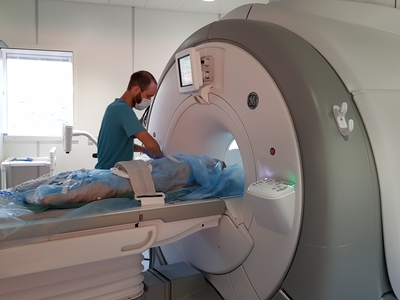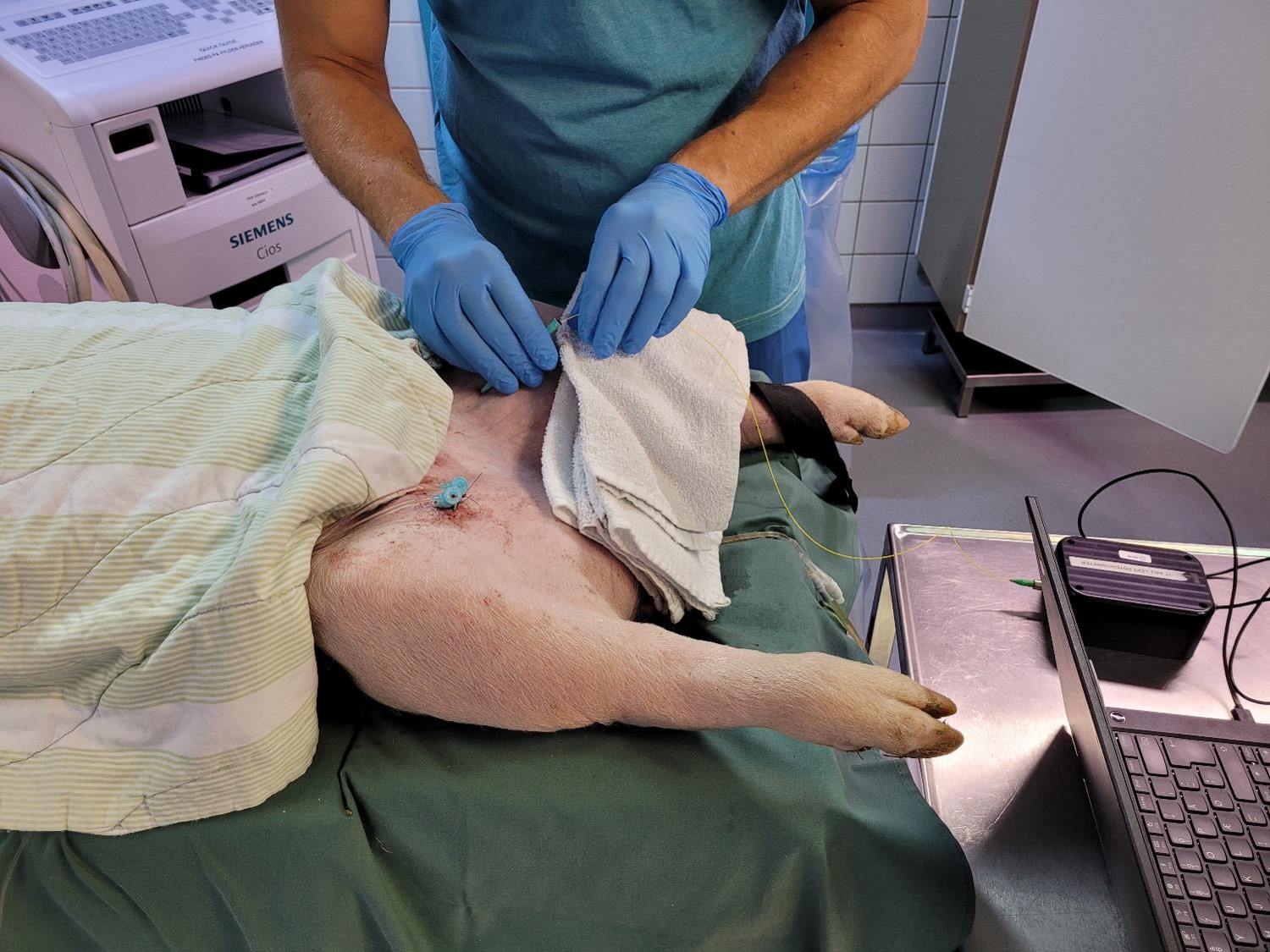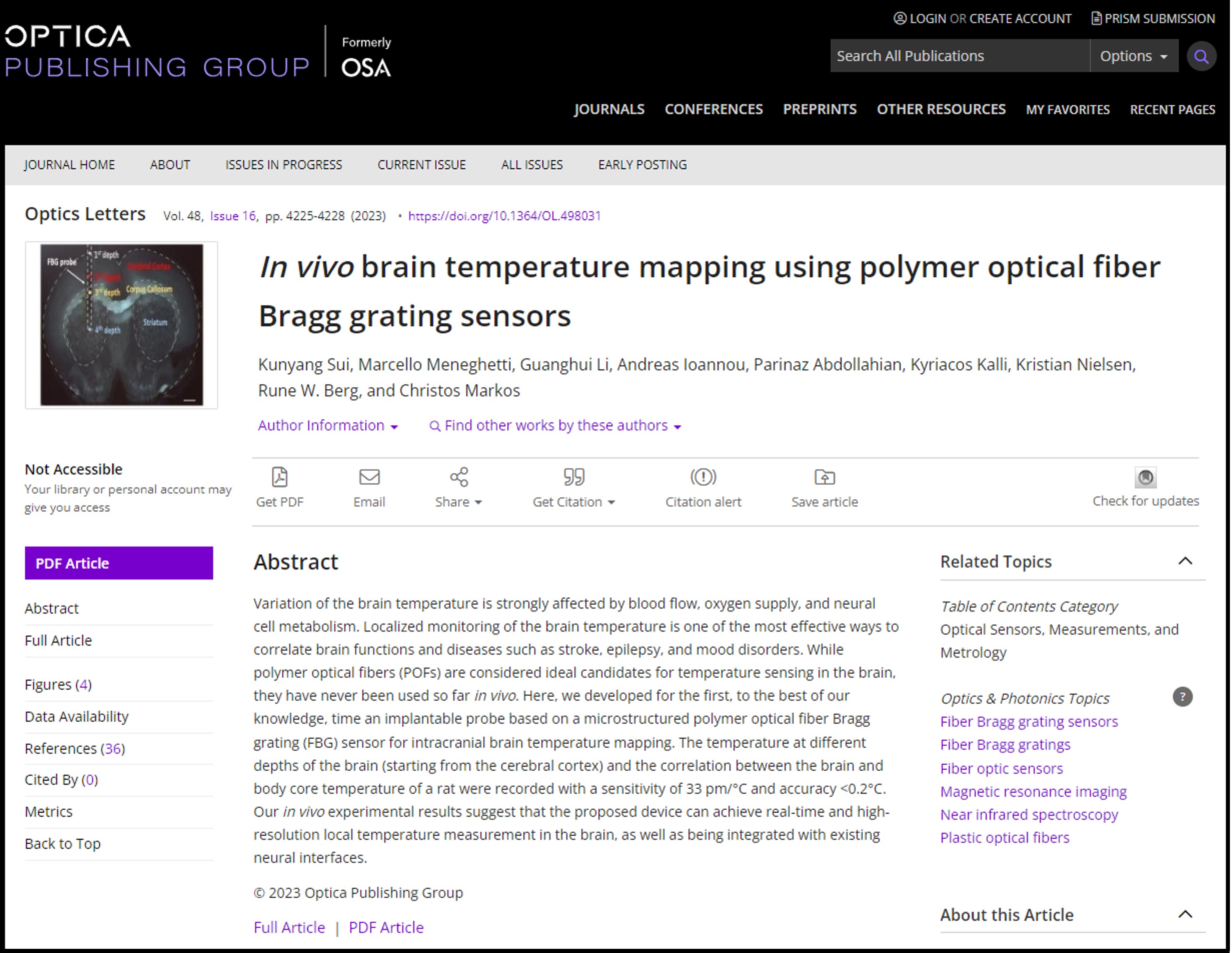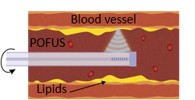SHUTE Sensing Solutions A/S produces all polymer fiber optic cables in-house. Polymer has obvious advantages to glass fiber regarding usage in human bodies. We are currently working together with partners on polymer fibers as part of bio mechanics projects. Another advantage is that SHUTE sensors work in highly magnetic environments, like MRI scanners.
How it works
SHUTE Sensing Solutions’ polymer fiber optic cables may be used as inner body communication wires in medical devices, transporting data to and from the med tech device and the human body.
SHUTE sensors can survive and function in high intensity magnetic fields: “We have tested the SHUTE mPOF sensor, and found it MRI/NMR compatible, it shows no sign of decrease in performance, when subjected to a gradient coil exercised with magnetic field strengths up to 1.5 T/m within a static main field of a 9.4 T super-conducting magnet. This paves the way for a whole new way of monitoring critical temperature values inside the MRI/NMR scanner environment.” says Palle Koch, Engineer, Dept. of Biomedical Sciences, University of Copenhagen. Read more about it here: 'MRI Scanner Results October 2020'. The compatibility was recently confirmed by another partner. They tested SHUTE’s polymer fiber sensors and found them to be MRI and MPI compatible. In the 7T and 9.4T MRI scanners they found no major image artifacts and in the MPI scanner they found that the sensor only produced a negligible MPI/MPS signal.

In cooperation with the MR Research Centre at Aarhus University, SHUTE has tested its mPOF sensors inside a 3.0 Tesla GE Discovery MI scanner. "We wanted to test for respiration, motion detection, pulse and heart rate" SHUTE CTO Kristian Nielsen explains. The tests were performed on a 45 kilo, 3 months old, sedated pig inside a highly magnetic environment. "We had some fantastic results" Kristian Nielsen continues "The SHUTE fiber sensor bed patch easily detected respiration and even picked up a detailed pulse graph when the data was filtered." "Doing more tests with a SHUTE sensor patch on the chest of the pig, we saw clear pulse and heart rate movement."
The operating radiologist tried to detect the SHUTE fiber; but conclusion was, that the fiber image did not disturb any tests and he found the fiber virtually invisible. "To sum up, a perfect day of testing! All the tested SHUTE sensors performed perfectly in the high magnetic field" a satisfied CTO Kristian Nielsen concludes. Read more about it here: 'MRI Scanner Test Results June 2021'

In further cooperation with the MR Research Centre at Aarhus University, SHUTE tested its mPOF sensors inside the arteries of a sedated pig to monitor the blood pressure intravascularly. Combining the good results of the MRI scanner compabilities with intravascular sensing, new doors open. Lab Manager, PhD, Esben S. S. Hansen af the MR Research Center says: "This opens up to a whole new application of intravascular sensing, and potentially sensing directly inside the heart and its vessels". He continues: "With the promising results from our last efforts we are quite hopeful that we can use the sensors to track the pressure and force of the heart while being inside the MRI scanner environment. We will continue testing these novel MRI compatible invasive sensors and look for the possibilities it brings". Read more about it here : 'Monitoring Blood Pressure Intravascularly'
Temperature monitoring in the brain
SHUTE polymer optical fiber sensors have successfully been employed by the Neural Devices group of DTU Electro at the Technical University of Denmark in collaboration with other institutions for temperature monitoring in different depths of a rat’s brain. Here passages from the academic paper:
“Optical fibers are an alternative promising platform for physiological sensing due to their small dimension, high sensitivity, and compatibility with electromagnetic equipment. Good thermal response of silica fiber Bragg gratings (FBGs) has been demonstrated in a rat brain during temperature changes induced by methamphetamine and metformin drugs. However, the high Young’s modulus of glass fibers significantly increases the inflammation due to the foreign body response compared to soft polymer materials, and their brittle and fragile nature can be a matter of concern when conducting in vivo experiments. Therefore, polymer optical fibers (POFs) are considered the most suitable platform for high-resolution biosensing due to their high sensitivity, flexibility, and biocompatibility.”
“Measuring the temperature locally in different brain regions is extremely important to understand the brain function and neural activity. Here we performed an acute in vivo experiment to map the temperature of the cerebral cortex, corpus callosum, and striatum (caudate putamen), in an anesthetized rat.”
“In conclusion, we anticipate that the developed flexible polymer FBG-based probe can work as an efficient sensor for high-resolution measurements of local temperature in the brain.”
Read more about it here.

Polymer Optical Fiber Ultrasound Sensor
Co-funded by Innovation Fund Denmark, we are currently working on developing the first commercial Polymer Optical Fiber Ultrasound Sensor (POFUS), which uses the strain induced spectral shift of the Fiber Bragg Grating sensor to measure the intensity of the incoming ultrasound waves. The POFUS will not only hold the typical advantages of optical fiber sensors over conventional sensors, like, reduced size, immunity to EMI, but also offer additional advantages like high-frequency operation, etc. making it ideal for medical imaging. Developing it even further can make it ideal for intravascular and endoscopic applications.
First step in making the POFUS is to make a non-electric vibration sensor. Read more about it here: 'Accoustic Vibrations Sensor'


Polymer fibers can also be used for other applications where mechanical properties are important. By combining polymer with surgical steel, even more robust fibers with different combinations of flexibility and stiffness can be achieved.
Additional material
Brochures, White paper, Articles, Customized polymer optical fibers. Please contact us for more information.

